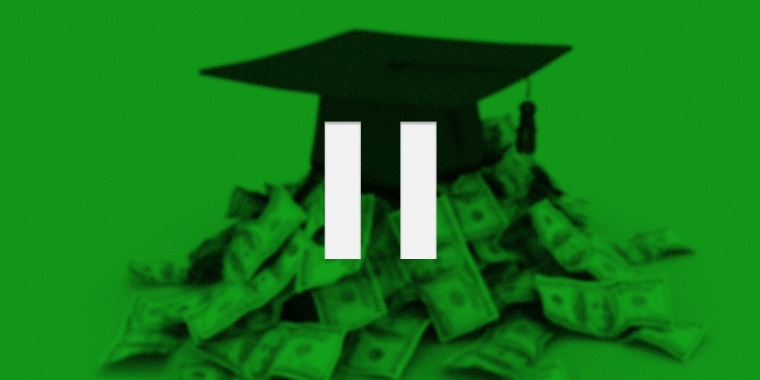Tens of millions of Americans got an early Christmas gift Wednesday when the Biden administration announced it would be extending the moratorium on student loan repayments, which was supposed to expire at the end of next month, by 90 days. The moratorium was first put in place in March 2020 as part of the response to Covid-19, and it had already been extended three times. The last time it was extended, in September, the Department of Education said it would be the “final extension.” So this, I guess, is the final final extension.
The U.S. government, after all, doesn’t need an extra $7 billion a month right now.
The obvious question, of course, is what’s changed since September to justify keeping the moratorium in place. And the answer is not enough — and that’s precisely why the administration’s decision makes sense.
The extension means the more than 40 million student loan borrowers now don’t have to come up with hundreds or even thousands in monthly loan payments until May. That’s obviously a huge benefit, particularly since surveys suggest a high percentage of them were going to find it financially challenging to resume repayments. Between inflation and omicron, there’s a lot for people to worry about right now. The extension removes one big source of anxiety.
But the extension will also be beneficial for the economy as a whole. Even though the total amount of monthly loan repayments is, in the grand scheme of things, small (around $7 billion), deferring those payments will help keep demand strong at a time when the economy is facing some new headwinds.
To be sure, the job market is stronger than it was three months ago: Unemployment has fallen from 4.8 percent to 4.2 percent, and the economy’s added almost more than 800,000 jobs. But the sharp rise in the inflation rate (which is now up to 6.8 percent) has eroded wage gains for most workers and dented consumer confidence, and the economy is growing at only a respectable, but not rapid, pace. Most importantly, we’re still in the middle of a pandemic that the White House (like most of us) was counting on us being out of by now, a problem that’s only been exacerbated by the arrival of the omicron variant.
Some, like former Secretary of the Treasury Larry Summers, have suggested that the extension is bad because it will help fuel inflation, rather than help student-loan borrowers deal with it. But the total amount of monthly loan repayments that are being deferred is, in the grand scheme of things, small (around $7 billion), and not all of that money will be spent, so it’s unlikely the deferral will have much of an impact on inflation at all.
That’s especially true because the U.S. economy is now facing headwinds that will likely reduce demand in the months ahead. The Federal Reserve is now much more concerned about inflation than it was, meaning monetary policy is likely to tighten going forward. The failure of the Democrats, at least as of now, to pass the Build Back Better bill means not only that federal spending will be lower than expected next year, but also that the enhanced child tax credit is going to expire at the end of the month. The tax credit was saving American families billions of dollars every month, savings that are now going to vanish.
Then there’s omicron. This new variant isn’t going to put us back in March 2020 — or even January 2021 — mode, particularly emerging evidence suggests it may well be milder than earlier variants, and vaccines and new therapeutics are going to blunt its impact. But already in the process of infecting millions of people, many of whom are going to miss work (and wages) as a result. And we still don’t know if Omicron will have any impact on people’s willingness to do things like eating out. The moratorium was put in place as a pandemic measure. And, like it or not, the pandemic is still with us.
The Federal Reserve is now much more concerned about inflation than it was, meaning monetary policy is likely to tighten going forward.
It’s true that the loans will eventually have to be repaid, unless President Joe Biden decides to cancel big chunks of student loan debt, as progressives have been pressing him to do. There’s just no reason they need to start being repaid on Feb. 1. The U.S. government, after all, doesn’t need an extra $7 billion a month right now; it can borrow long term at exceptionally low rates if it wants. It's better to keep that money in the economy and give student loan borrowers four months to prepare to start making payments again, rather than just depositing it in the government’s bank account.
Of course, when the moratorium ends, it will take a bite out of consumer demand. But the bite will be small, and the bet is that by May, Covid will be less of a problem, and economic uncertainty will have diminished. At that point, losing a few billion a month in consumer demand won’t matter much, and the job market will have had more than a year of full recovery. It’s fair to say that all these extensions are doing is kicking the can down the road. But kicking the can down the road is sometimes the right strategy, and when it comes to student-loan payments, now is definitely one of those times.
